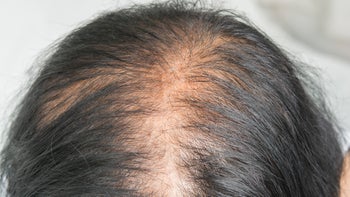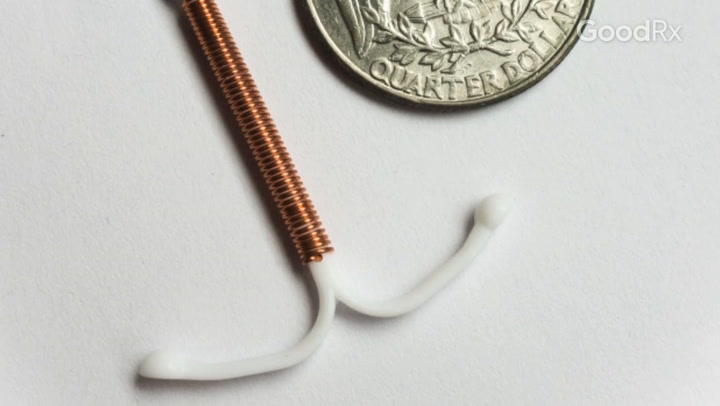
Vaginitis: Symptoms, Causes, and Treatments
What is vaginitis?
Vaginitis is a common problem seen daily in many healthcare provider's offices. It is inflammation or infection of the vagina that affects people with female anatomy of all ages. As many as one-third of women will have symptoms of vaginitis that get in the way of life.
A healthy vagina is home to “healthy” and “unhealthy” microbes, including bacteria and yeast that coexist with each other. The exact balance of these microbes is what determines the pH of the vagina. The pH is the number that measures how acidic or alkaline (the opposite of acidic) something is. A normal vaginal pH is acidic (pH of 4.5 and under). If the vagina is not acidic enough, the balance of microbes changes and this can cause vaginitis.
Table of contents

Why trust us

Our Author:
Camille Moreno, DO, NCMPDr. Moreno is a women’s health specialist practicing in North Carolina. She is a certified menopause practitioner and is also board-certified in family medicine.
This guide is based on guidelines and recommendations set by the American College of Obstetricians and Gynecologists (ACOG), the Centers for Disease Control and Prevention (CDC), and the National Center for Biotechnology Information (NCBI). In addition, Dr. Moreno consulted with experts in the field on their clinical practice.
Here are some common reasons why the pH of the vagina can change:
A change in hormone levels, which could be caused by pregnancy, breastfeeding, or menopause
Taking antibiotics or steroid pills
An underlying illness
Having a sexually transmitted infection (STI)
Vaginal infection
Vaginal douching
Using scented soaps, lotions, or bubble baths
Having diabetes that is difficult to control
Using oral birth control or an intrauterine device (IUD)
In need of menopause symptom relief?
Get Premarin for over 55% less than the average retail price with GoodRx.

Do you have vaginitis?
Vaginitis is the term for inflammation or infection of the vagina. The symptoms will be different depending on the underlying cause. Some people may not even have symptoms.
Common symptoms of vaginitis are:
Itching and burning
Abnormal vaginal discharge
Unpleasant vaginal smell (vaginal odor)
Vaginal lumps, bumps, or rashes
Some people have symptoms that change at different times in the month in line with the menstrual cycle. You might want to track your symptoms against your menstrual cycle to see if you notice a pattern. For example, you might get vaginal burning and itching every month at the same stage of your cycle. Or maybe your symptoms worsen just before or during menstrual bleeding. It’s also possible that your symptoms may improve during your bleeding days.
Knowing what your healthy vagina feels like and smells like, and being in tune with how your vaginal discharge varies throughout the month, will help you spot when things are not right. A healthy vagina should not be itchy or uncomfortable.
Vaginal itching
Vaginal itching can be caused by chemical irritants, yeast infections, and some skin conditions. The skin lining the vagina is made up of the same cells that constitute skin everywhere else. Vaginal redness, swelling of the vulva (lips of the vagina), and even a rash frequently accompany vaginal itching. Vaginal itching that is not due to an infection is also common. It can be caused by a reaction to something that your vagina has come in contact with, such as:
Scented soap
Body wash
Lotions
Tampons or pads
Read more like this
Explore these related articles, suggested for readers like you.
Vaginal discharge
A change in the amount, color, or consistency of your vaginal discharge could be a sign that your vaginal health needs some attention. If you also have itching, discomfort, and a change in your normal vaginal odor, there’s a good possibility that you have vaginitis. Other causes of abnormal vaginal discharge are STIs or — rarely — cervical cancer.
Vaginal odor
Every vagina has it’s own unique smell that varies throughout the month and with activity and the seasons. You are probably familiar with what is normal for you. A change in vaginal odor — to something quite unpleasant — is typical of an underlying vaginal infection caused by a pH imbalance.
Vaginal lumps and bumps
Vaginal lumps and bumps can be normal but should not cause pain or bleeding. A new lump or bump, or a change in the size, consistency, or appearance of an existing lump, should always be looked into. Possible causes are an infected cyst, an STI, or even cancer.
If you are concerned that you have a vaginal infection, you should see your healthcare provider to get a complete evaluation and physical examination.
Quiz: Bacterial Vaginosis (BV) or Yeast Infection
What causes vaginitis?
Vaginitis is most often caused by an imbalance of yeast and bacteria living in the vagina. When the balance is disturbed and the vaginal pH changes, it becomes possible for one family of microbes to grow and multiply, becoming out of balance with the others. This causes an infection.
Most causes of vaginitis are caused by one of these types of infections or inflammation:
Bacterial vaginosis
Candidiasis
Trichomonas
Other causes of non-infectious vaginitis are:
Vaginal atrophy (genitourinary syndrome of menopause)
Desquamative inflammatory vaginitis
It is possible to have more than one cause of vaginitis at the same time.
Vaginitis is usually not contagious, although sometimes the underlying infection is transmitted through sex. You can’t get vaginitis from:
Toilet seats
Public bathrooms
Swimming pools
Bedding
Bacterial vaginosis
Bacterial vaginosis, also known as BV, is a bacterial infection of the vagina and is caused by a pH imbalance. It is linked to being sexually active, but you can’t catch it from sex. However, it’s not known what specifically causes BV and how it spreads, although it’s commonly linked to douching and having multiple sexual partners.
It’s the most common vaginal infection affecting people with female anatomy aged 15 to 44. Studies have shown that about 29% of women are affected.
Many people with BV do not have symptoms. When they do, they present with:
Abnormal discharge
Vaginal burning
Irritation
A strong, fish-like vaginal odor, typically after sex
Healthcare providers diagnose BV by taking a sample of vaginal fluid and examining it under a microscope in the clinic or sending it for testing.
Vaginal candidiasis
Vaginal candidiasis, also known as thrush, is a yeast infection of the vagina caused by a certain type of yeast, called Candida.
Candidiasis presents with mostly mild symptoms, such as:
Vaginal itching
Burning
Soreness
White, cheese-like discharge
In some, it can present severely with vaginal swelling, redness, and even cracks on the skin. It is associated with certain conditions, including:
Pregnancy
Use of antibiotics
A weakened immune system
Healthcare providers diagnose candidiasis by taking a sample of vaginal discharge and examining it under a microscope in the clinic or sending it for a fungal or yeast culture. DNA testing is also available to help identify certain species of yeast.
Trichomoniasis
Trichomoniasis is a curable sexually transmitted infection caused by a parasite called Trichomonas. It can increase the spread and transmission of other STIs, such as gonorrhea and chlamydia, in sexually active people.
It affects about 3% of people with female anatomy. Studies have noted that only about 26% to 30% present with symptoms.
Most people infected with Trichomonas do not have any symptoms, but when they do, they present with:
An abnormal vaginal discharge
Vaginal burning
Itching
Soreness
Burning with urination
It can even cause genital inflammation that could increase the spread of HIV.
It’s difficult to diagnose trichomoniasis based on symptoms alone. Healthcare providers diagnose trichomoniasis by taking a sample of vaginal discharge and examining it under a microscope in the clinic or sending it for DNA testing. Sex partners of people diagnosed with trichomoniasis need to be treated.
How do you relieve the symptoms of vaginitis?
The best treatment for your symptoms will be determined by the cause of the vaginitis and the symptoms you are experiencing. Treatment can come in different forms.
It could be a:
Pill
Vaginal cream
Vaginal gel
Or a combination
You’ll want to follow the instructions given by your provider or pharmacist. Especially with antibiotics, taking the full course of treatment will make sure your infection goes away — and is less likely to come back.
Will vaginitis go away on its own?
Again, it depends on the cause. Vaginitis caused by BV typically goes away on its own without treatment. If BV is causing bothersome symptoms, such as vaginal irritation, pain, or burning, antibiotics are a good option.
A mild yeast infection may go away on its own, but treating it may provide faster relief. If a yeast infection is not treated, there’s a good chance that your symptoms will continue to affect you or come back.
Trichomoniasis should always be treated even if you do not have symptoms. Your partner will also need to be treated. Using condoms every time you have sex can lower your chances of getting trichomoniasis.
How is bacterial vaginosis treated?
Bacterial vaginosis is treated with a common antibiotic pill called metronidazole. Drinking alcohol with metronidazole pills will give you an upset stomach and vomiting, so it’s best to avoid alcohol until at least 24 hours after finishing the course. Another common treatment is vaginal clindamycin, an antibiotic vaginal cream, that has fewer side effects and is absorbed directly into the body.
How is vaginal candidiasis treated?
Vaginal candidiasis is usually easily treated with an over-the-counter vaginal antifungal cream, such as Monistat (clotrimazole). An oral antifungal pill is available by prescription (fluconazole) that is taken as a single dose by mouth. For severe infections, a longer treatment course with an antifungal pill such as fluconazole or itraconazole will usually do the trick. Vaginal boric acid and vaginal flucytosine may be used alone or in conjunction with oral and antifungal medications. Sexual partners rarely need to be treated.
How is trichomoniasis treated?
Trichomoniasis is treated with a common oral antibiotic called metronidazole or tinidazole. Any recent sex partners should also get treatment with antibiotics. Your current sex partners should be treated at the same time as you to prevent re-infection. It’s a good idea to hold off on having sex again until your sex partners are treated and all symptoms have gone away. Remember to get checked out after 3 months to make sure the infection has gone away and that you have not been infected again.
Preventing recurrent vaginitis
About 8% of people will have vaginitis symptoms that come back after treatment or that don’t improve with treatment. The best way to prevent recurrent vaginitis is to take good care of your vaginal and vulvar health. When showering or bathing, don’t use harsh, scented soaps on, around, or inside the vulva, as these can upset the special pH balance there. In fact, simply cleaning with warm water is enough around and between the folds of skin around the vagina. Don’t use soap or cleansers inside the vagina itself, or around the vaginal and urethral openings. Irritating these sensitive areas just makes them more prone to infection.

Improving vaginal health
Good genital hygiene and safe sex are essential to keeping your vagina healthy. It is also possible that certain foods may contribute to recurrent vaginal infections.
Good vaginal care
Keep your vagina dry and free of irritants. Here are some top tips:
Use only warm water to keep the vagina clean.
If you need to use soap on your genitals, use one that is mild and unscented.
Avoid douching.
Avoid feminine sprays and fragranced powders.
Choose 100% cotton underwear that keep the vagina dry, and avoid materials such as nylon and rayon.
Change sanitary tampons and pads regularly.
Avoid tight clothing.
Safe and healthy sex habits
Make sure your partner uses a condom if they have a penis.
Avoid having sex if you have symptoms of vaginitis.
Vaginitis and pregnancy
Pregnant women are susceptible to certain types of vaginitis. Depending on the infection, it can cause health challenges for the pregnancy.
How can BV affect pregnancy?
The CDC estimates that about 25% of pregnant people get BV. Pregnant people are at risk of getting BV due to hormonal changes that occur during pregnancy. They are more likely to have babies who are at risk of premature or early birth and low birth weight (less than 5.5 pounds at birth) than are those who don’t have BV during pregnancy. Being born early or too small can cause health problems for your baby. It’s important to treat BV in this population.
How can vaginal candidiasis affect pregnancy?
Increased estrogen during pregnancy can throw off the healthy balance of microbes in the vagina. This can cause an overgrowth of yeast, which will not hurt you or your baby. Yeast infections can be safely treated with an over-the-counter or prescription antifungal cream or vaginal suppositories. Just be sure to check with your provider first! An oral antifungal medication, fluconazole, is not generally recommended for women who are pregnant. Some research suggests it could cause birth defects in babies exposed to high doses.
How can trichomoniasis affect pregnancy?
Babies of pregnant people with trichomonas are at risk of premature or early birth and low birth weight. There is limited evidence showing that treatment with oral metronidazole may or may not prevent these risks during pregnancy. Larger studies are needed to study the association.
Keep in mind
Not all cases of vaginitis are caused by an underlying vaginal infection. There are types of inflammation that are non-infectious, such as vaginal atrophy and desquamative inflammatory vaginitis. Different treatments work for different types of vaginitis.
Therapy for non-infectious vaginitis
Treatment will depend on the cause.
Vaginal atrophy (genitourinary syndrome of menopause) is treated with non-hormonal and hormonal therapies. First-line non-hormonal treatments include vaginal lubricants, moisturizers, and routine sexual activity. Hormonal treatments include low-dose vaginal estrogen preparations available in creams, tablets, and rings.
Desquamative inflammatory vaginitis is poorly understood. Some studies have shown improvement in symptoms with application of topical clindamycin or steroids. However, duration of treatment, types, and dosages are not known.
More information and resources
Why trust our experts?


References
American College of Obstetricians and Gynecologists. (2020). Vaginitis. Retrieved from https://www.acog.org/en/Womens%20Health/FAQs/Vaginitis
Anderson-Cardwell, M. (2018). Preventing vaginal yeast infections with lifestyle and diet changes. Retrieved from https://intermountainhealthcare.org/blogs/topics/live-well/2018/03/preventing-vaginal-yeast-infections-with-lifestyle-and-diet-changes/
Brabant, G. (2016). Bacterial vaginosis and spontaneous preterm birth. Journal de Gynécologie Obstétrique et Biologie de la Reproduction, 45(10), 1247-1260.
Centers for Disease Control and Prevention. (2020). Bacterial vaginosis — CDC fact sheet. Retrieved from https://www.cdc.gov/std/bv/stdfact-bacterial-vaginosis.htm/
Centers for Disease Control and Prevention. (2020). Trichomoniasis — CDC Fact Sheet. Retrieved from https://www.cdc.gov/std/trichomonas/stdfact-trichomoniasis.htm
Centers for Disease Control and Prevention. (2015). Trichomoniasis. Retrieved from https://www.cdc.gov/std/tg2015/trichomoniasis.htm
Centers for Disease Control and Prevention. (2020). Vaginal candidiasis. Retrieved from https://www.cdc.gov/fungal/diseases/candidiasis/genital/index.html
Haefner, H. K. (1999). Current evaluation and management of vulvovaginitis. Clinical Obstetrics & Gynecology, 42(2), 184-195.
Haukkamaa, M., Stranden, P., Jousimies-Somer, H., & Siitonen, A. (1986). Bacterial flora of the cervix in women using different methods of contraception. American Journal of Obstetrics & Gynecology, 154(3), 520-524.
Hildebrand, J. P., & Kansagor, A. T. (2020). Vaginitis. StatPearls. Retrieved from https://www.ncbi.nlm.nih.gov/books/NBK470302/
Mills, B. (2017). Vaginitis: Beyond the basics. Obstetrics and Gynecology Clinics of North America, 44(2), 159-177.
Molgaard-Nielsen, D., Svanstrom, H., Melbye, M., et al. (2016). Association between use of oral fluconazole during pregnancy and risk of spontaneous abortion and stillbirth. JAMA, 315(1), 58-67.
Paladine, H., & Desai, U. (2018). Vaginitis: Diagnosis and treatment. American Family Physician, 97(5), 321-329.





























